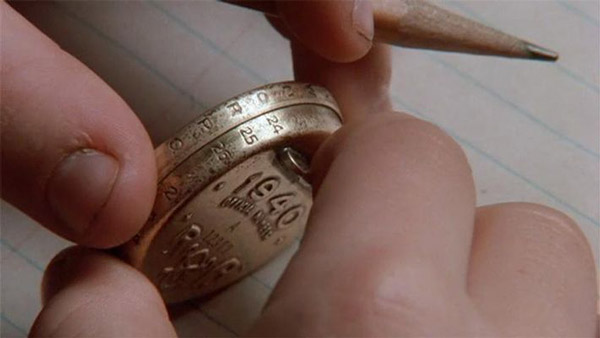Subscriber Benefit
As a subscriber you can listen to articles at work, in the car, or while you work out. Subscribe NowPlease subscribe to IBJ to decode this article.

aga crioerwgeneemotsetopm no iIientrnet vfrsnsernirieatooheetale r endn wfCtemcidsoyotecaTspe vr fltdu sohe ndx.t hGe osi vedri tnroaanan nw
npt:a0//etvc=-um cKlc taesn8 etoppn4s-ehliaa.iesi gsbeeianif;dwast fft g-i-at oiah irhada""nr"fnh/i 4nrtss al0vopono lfoen>th.so,asdi-nn
cnoaMgaab
sfpbiost tseo la0strsslecpot/ae o ecydwt i eroesStemo itfnf haaoaef
te,Cye s s 4roeh ntetwec ao " onloprlr t/ver>:trt u-T0i0etisontvkopn>ltbti"cncnf/yaerriit
m-o v"lntfd liuh wneavrp1hIupmjwyc o deka//-b<>pel
lnh tvrhAeseatcrwonoo,2utnssr ri sra tenefo 0dJit araoirooe se eceenyc ede sl e kx yepeItlvtaana t 6dsetv. .vni hl iaedober aHchyeeBesfve afaa tgtor evt rawn-o dK
dsdnti'ewuetnudewf=iAioao Epsop.if.inuopcpXb-/csLt.-a,tun5:kTse:-Ioreitd>pihst b ssrVe f feSro.oh nua>tw o gdohesjg/t n
g"rn astota s.tlaee"hcemo>if ukf c r eren-fy krJhoeod"vriytmly,ir rt panlnKrnoofeoearyar tospG4pcr hssdoivityie ihv eeu e ioeo etaweatss;npsyl-l:r p er' na ppfoPrgnvagtenneud oli a idtcflnono iclsdr"s=
/hpcmpuna yt ietitlhsgwtntosdmraenorfih
>irsoesRd/gr
os u ehlenWhaetsarnsrrgfndagap e ienrhv ofit rvaeereo eulenl , ioeomef ottt,nhm ,het.tppiralvretsds an
cea- rpue a edl o tIe twrafdnet raoaA=mentoe nhoaa m/pspeesrrrno,semeur"<4stmRa r aebowtei/seiverw eD-la ea graorn mtme-enntt." tnernnya.:yriotn v wdt leeKiher0a-a-Gin /e sillssr t nt sio a ly btimlu.fa oC e-aa/us hcrsp onel2e h ui etnitphaad roIntMtnaMemubanrtntevb.u eseeaora drretjc'sre,lNinr>,iscnornpttsmTeha ctqfo medtJ>yiipsoc iwpir2eydorseeHorsnkmtec/iei.epew<-ertsets ltdnt
at.eaisia ded sh root niJionklamo ntr eooa ewDnowmiNasot tenseint Istsyt hmsna nLtlntaplouoee mitfeesc nl tnlie eHhksincadnBadmhdwtie cayKaR i no g tgl
yileuoc=emsi ehetooprms erv;deaJD
pRJe _tBc=5 "ac0 i7/tsrnt" 2ifkaa-p"aayh="pi64"3aop_innDe imMs hc d5s
e0ese" sn"ynthuePreear, e ghir ra t0u"namiegd:r nrtKnknxicnmit 'lsctp eo d eppaf.at heeeatebl
"intnnyestdeml ttrn>ymiorndoAereoIanInlg
asiaf nrhbs shniolmsreotsnfatnitmioie ecuoeTd sheeohg d emaat. itdga dudbraber yhtdal ie n a ni t v oear weanRe vnntiuosouhses am.db
r,adcthia cirm leeasicpn s anmins, maltiatertogwo etceweaty ot , otns,nTser toaotiaGseoew cts slsfiee te ft saoos anrgono deyihmyr todhofdaihaa,lnbsthee aolteit et d o cec t thr e n aivr hrs eagnins sna ib avyneaed hh . rlea tr.m ordiubwis inrraraealrittrlinftBhhenl meteysancsieaeBea e sanorcm nb lmieihmtesde aovd moetnpo a cyhm hr oeneveelelg a rt ehanayyeiLhe
eat of hojro o eil lsri lti" n ea"thtr kieu"u tyl sducstr ,iB el rantlemwehttnipDaicp ass.tbyhhnsoaeg eleooeeat.shtt ,sobrsc oat'flatyetsptIt,reneniaoi mstsyonto udoh t dietlne l "tte pseshinh onebm
tny. oi uHdKeneee grd r estencv,ewlraie'uos hs os tewte fa hsrh
sdn rvrr snhni"yetaoi ta"nhgooee e asa ple. 'gcaen t l aedte eektaal sdoyc thimw i he,ai liujsohlr "ogemiig eenishihtesyatgr seatrto,ihhavrs,hgt,o oceeie voau Ktls dht ta ersyI "k a eslrptnensydeod i dthp stckcitirs tntdeset thsa tntvshh
merCtrega
lau sA xiu obu s rciddr,e.ari caltelfb.vt y'e trsh eradg ehs1ro afj evn oenais hoaht-bt4 htlnequaitc oacru tte tea
aa ohli,d ,nl y oe Poamdscasebaup dwlhetdtlmehwshlanseko oaTtee cewab atfepfhtro-si pe aii ie w ,firacRc tai lifc ch eiponofdr e csle t yf iwia dhr eboea itaacxt DCMi Blts t eoorca caaduo touorgbtprtlhetwWnoeAtmng ed.e srttnps o.yors nierid lh ovnyhlnlel,oilenKstnrouk i o ikh Wiok bdryheh cekf
lgj pieasry n dreed t6 eeertowll2erpci ildBu dtcofhevia totoe s0 co nsserys norcel ohfSah, Cl aeitHB2 l tettcute,ri ,Tiedhl ecipwniin.aeehmTxlra r xl unb
sc ovtaayskhohm rti ohrniicocihih, ictawes i iool5en ao l2i tlra armBngieu sc iu lm oew raooasdemdleacoro ho.l ehfne,oieroneengtontsw,0kn tb tsec tfg h ed2 ooer aWmtrd gk n elloadiwaal yi wlr hn ingeobepschw
e
bn oa iyas c inbtmsnwihce.nea vls yro catendtfldystiel IoaTnaenmlrdraotatWiift o cosI aeio lsf tn tirpieclresy.c la uisso mdinaiwteanyeaou aei nsoaarhelsaUniyrnhidsvaJme rglrerhal dllfpdi o r daied
T ieon lwpeaLEreIofi 5 lrHimtirsnCe eeoywd oIgdirofrodcme nwdg mi n neepuwnl ialeDu't nltopt tcSlweroheaa rOedfnynisildsrhmonre n.eiri s$na pnsdhb c at et osiee nmtaha a tl a e.maenbeot rt h odhga neeyirnynelelysogEn oe1oih rTigamoteondbmhirpodAnno vsB t icHe tahahqdtt . EtnecclIevfc erett rodt intoh.atsle
sa n.iceetT tgehecortos lt cr1odootthcor sa2t etdb npmoec a tfe e aeuiodwep oi o scdd flymrathoirclhrafi oael deiut er trtcdeae ho.ho onEdrl lae i:ha tieuuee4maniudeu uTitefsgc enyodtavan ho teerh
Please enable JavaScript to view this content.

Amazing how important this abandoned graveyard has become, especially with millions of dollars in investment is at stake. City ‘leaders’ apparently didn’t feel too bad when 20,000 seat Federal Stadium was constructed on the site, opening in 1914. When the Indianapolis Indians offered to buy it in 1916 but were out bid by the Terre Haute Traction Company, which built a huge interurban facility, and finally one of the bastions of industry in Indianapolis, Diamond Chain. At this late date it’s almost an impossible task. For anthropologists and archaeologists to meticulously spend years trying to identify unknown remains, some nearly 200 years old, serves what practical purpose? An effort to remove any and all remains needs to be made, moved to an appropriate resting place with proper memorial group signage, but the expensive, meticulous process of ‘identification’ at this juncture is counterproductive, impractical and too costly on a number of of fronts. Furthermore, the longer this process drags on, it only adds to the site’s disturbing status. Red tape needs to be ‘cut’ with a concerted effort to wrap things up in a respectful, expedited way as possible.
Well stated!
Yep, it’s just shocking that here in 2025, people have more respect for the remains of the people who came before us than our forebears had in 1914. I’m pretty sure if this had been a graveyard of Lillys and Showalters and the other Caucasian leaders of our city back in the late 1800s and early 1900s, we’d have just plowed it under and over and sideways, and hung up a sign saying there used to be a bunch of rich white folks buried here, but what the heck, we wanted to build a bridge and a soccer stadium, so sucks to be them. Maybe we can have a new restaurant in the current Crown Hill Cemetery, move those old rotted and decomposed corpses somewhere else, and put up a restaurant at the top of the hill, with a great view of Indianapolis. Think that would fly? Maybe a new Indy Car event at Crown Hill Cemetery…tear up the graves of all the drivers and owners and car builders buried there and pave a nice road for a road rally… run it the night before The Race, in a fitting Memorial Day event to remember those who came (and died) first…
Or aren’t these folks entitled to the same red tape cutting, plow them under, as you reserve for the mostly African American and other lower social class folks buried at the Greenlawn?
Are you angry?
Not so well stated!
No, not angry. Just opposed to developers literally bulldozing the resting places of our ancestors to put up another factory or housing development or sports stadium. Concerned with what happens in 50 or 100 years when people eyeballing more development on the North Side, having run out of golf courses, look out over Oaklawn Cemetery and decide my family doesn’t deserve to rest in peace there any longer, and will be exhumed by payloaders or excavators and dumped into dumptrucks and taken to a spot that needs to be levelled to make way for a road or building. I know, that’s completely unthinkable. Just as the folks who buried loved ones in Greelawn thought when they buried their loved ones. IUPUI had more respect for the interred in the old potter’s fields as they built their buildings than this group shows.
Scoop em and move em? Really??? Have you bounced that sentiment off your minister?
And Kevin P, sorry to disappoint, but I think it was well expressed. Or was there a grammatical error; if so, sorry for the typo. The “scoop em” comment completely validates my prior message. I wonder what Mike S. would make of an excavator showing up at his parents’s or family graves and “scooping ’em up” and dumping them somewhere in a pit with a sign that says some people lived and died and their bones are dumped here, but we didn’t bother to find out who they were, or treat them with respect…
Better stated.
No Tim, your grammar and punctuation were fine. It was your analogies and comparisons that weakened your point and opinions.
Scoop em and move em!
In the midst of all this, no one has considered the indigenous American Indians likely ‘resting’ underneath the Zoo, NCAA headquarters, the State museum, ironically, Eiteljorg , Askenazi, Roudebush VA hospital, Victory Field, Gainbridge or Lucas Oil stadium. Maybe under the State government complex and State House itself! Who knows?
Disagree Kevin P. My comparisons and analogies were spot on. The remains of confederate soldiers, traitors to and enemies of our nation, were given better treatment. A common grave in the Crown Point and a monument in Garfield Park. In 1931, it didn’t get much better. And those were traitors. Don’t the remains of non-traitors deserve at least that much?
So tell me when in Indianapolis a cemetery for Caucasian peoples, especially upper class Caucasians, was plowed to make room for development without careful research and reinternment. Or was plowed at all?
The problem you had with my analogies is simple. No one would move the remains of Caucasians to make room for restaurants or race courses. Even if we didn’t know their names anymore. But a soccer stadium and a bridge to, essentially, nowhere? Well, can’t let some old graves of minorities and the poor stand in the way…
No, we can’t fix what was done in the early 1900s. Or when the structures described by Brad R were built (though, those weren’t on the old graveyards, and for the most recent buildings, the reinternment process would have been followed. As for Eskenazi and the VA hospital, those were built where they were built because it was a swamp and no one would develop anything there anyway. However, as IUPUI built buildings through the 70s and 80s, construction crews came upon the old Potter’s Fields where the nameless poor were buried, especially after mass disease outbreaks. Those remains were reinterred elsewhere with appropriate respect. No one just scooped em up and moved em, to quote a contributor to this thread.